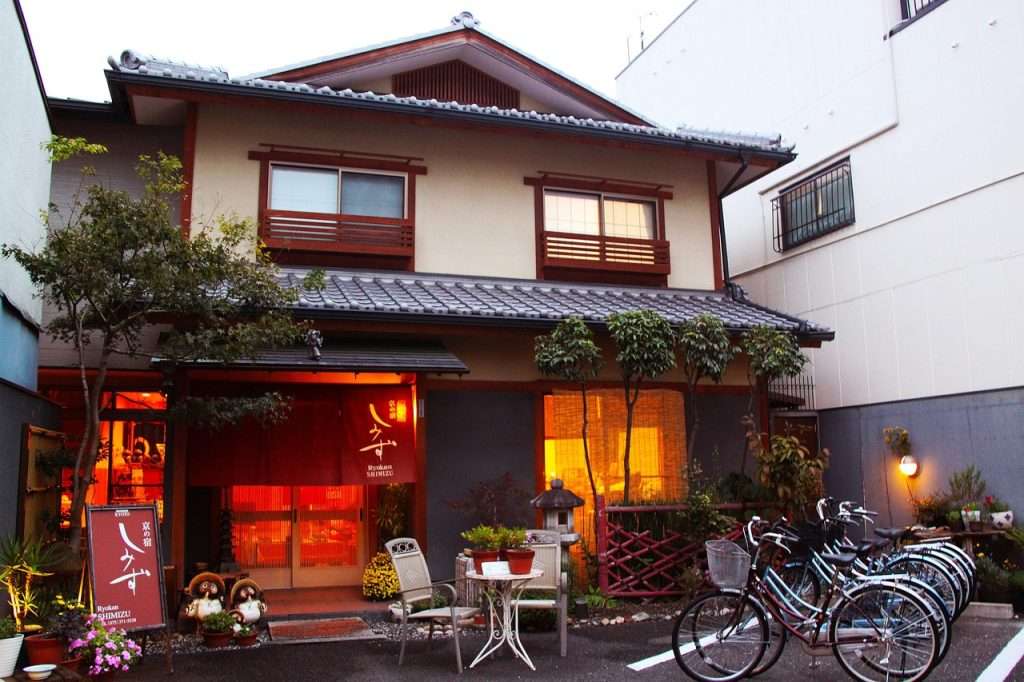Kyoto, the cultural heart of Japan, offers a out of the world accommodation experience through its traditional Japanese inns known as “ryokan.” These establishments embody the essence of Japanese hospitality, providing guests a unique blend of cultural and comfort experience.

ryokan kyoto Japan has architecture and design that reflect the city’s historical significance. Tatami-mat rooms adorned with sliding paper doors, or fusuma, create an ambiance that make guests feel bygone era. The minimalistic aesthetics emphasize harmony with nature is quintessentially Japanese.
A large number of Kyoto’s ryokans are placed in neighbourhoods that complement the city’s diverse cultural landscape. These inns are located in neighbourhoods Gion and Higashiyama, which are renowned for their maintained traditional architecture and historic beauty. Before retiring to the peaceful environment of a ryokan, travellers may take in the splendour of Kyoto’s history by roaming around the cobblestone alleyways of Gion.
The careful attention to details is what makes staying at a ryokan unique. Staff members wearing kimonos frequently greet guests with a bow, establishing a service and respectful atmosphere for the duration of the visit. In every second of the ryokan experience, omotenashi, or Japanese kindness, is deeply reflected.
The customary kaiseki lunch is one of the main attractions of ryokans. A multi-course feast featuring fresh and local products, kaiseki is served in the solitude of the guest’s room or in a shared dining area. Every dish has been thoughtfully chosen to entice the senses, transforming the presentation into a work of beauty. Eating turns into a cultural adventure that reveals Kyoto’s rich culinary history.
Japanese gardens add to the overall atmosphere of ryokan settings and are frequently an intrinsic part of them. These painstakingly planned areas are intended to inspire balance and harmony, resulting in a tranquil setting that visitors may enjoy. Certain ryokans provide a secluded haven within the inn with gardens connected to each room.

Another feature of staying at a ryokan is using the community baths, which might be called sento (public baths) or onsen (hot spring baths). Enlivened with a sense of ritual, these baths encourage rest and renewal. It is a long-standing custom that enhances the cultural diversity of the visit when visitors wash themselves before submerging themselves in the calming waters.
While many ryokans include modern facilities to meet current demands, many also proudly retain history. A pleasant night’s sleep is guaranteed by the futon bedding that is a mainstay of ryokans, while contemporary amenities like air conditioning and Wi-Fi provide a seamless fusion of old-world charm and contemporary comfort.
Kyoto’s ryokans are more than simply somewhere to stay; they’re doorsway into the local way of life. Guests are encouraged to embrace Japanese customs, such as taking part in a traditional tea ceremony or dressing casually in a yukata (kimono) for an evening stroll around the ryokan’s halls. To further enhance the total cultural immersion, some ryokans also provide cultural activities on the grounds, such calligraphy lessons or ikebana (flower arrangement).

In summary, staying in a Kyoto ryokan is an all-encompassing experience that combines history, culture, and hospitality rather than just a place to sleep. It’s a chance to see Kyoto at its core, taking in the rich history of the city and the kind welcome of the Japanese people.
